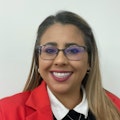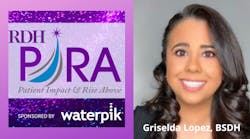Hispanic population faces abysmal oral health outcomes: What can be done?
The Hispanic and Latino population has accounted for 56% of the US population growth since 2000, according to the 2010 Census.1 In 2022, 42.3% of the population identified as a racial or ethnic minority.2
Despite this significant demographic shift, these populations face the worst oral care outcomes, according to many studies, and disparities in oral health are significantly impacting these communities. According to the Hispanic Dental Association (HDA), “Factors such as culture, language, immigration policies, anti-immigrant sentiments, and other social detriments of health are influencing their inability to access oral care.”3
Many live below the poverty line or reside in rural communities and rely on state-funded programs such as Medicaid. Unfortunately, it’s challenging to find a dental provider who accepts Medicaid. The scarcity of dentists who accept Medicaid is due primarily to low reimbursement rates.
A 2019 Centers for Disease Control and Prevention (CDC) report showed that when comparing Mexican Americans to White and Black non-Hispanic Americans, Mexican Americans had the highest caries prevalence and untreated decay rates in children, adolescents, and older adults.3
What has caused these problems?
A significant shortage of dentists in rural areas presents a major challenge to effective patient care. This scarcity is exacerbated by demographic and socioeconomic factors that shape the health experiences of these individuals, and this often leads to suboptimal health outcomes.
When faced with oral emergencies, many patients are compelled to seek help at hospitals, and this doesn’t address the cause of the problem.As the cost of oral health care continues to rise, more people are encountering barriers to accessing essential care. According to a 2021 report by the National Institutes of Health (NIH), dental expenses have surpassed medical prescriptions as the most significant financial barrier.4
This issue is particularly pronounced in the Hispanic population. Navigating the health-care system, let alone the dental health-care system, poses a significant challenge for this community. First-generation families face numerous obstacles, including language barriers. Many parents in these families lack access to transportation, raising the question of how they’re expected to travel for these services.
The CDC states, “To achieve health equity, we must change the systems and policies that have resulted in the generational injustices that give rise to racial and ethnic health disparities.”5 This statement underscores the urgent need for systemic and policy changes to address disparities and promote health equity.
What’s being done for the Hispanic population
On May 17, 2024, Sen. Bernie Sanders addressed a committee hearing titled, “Examining the dental care crisis in America: How can we make dental care more affordable and more accessible?” During his address, Sen. Sanders highlighted the plight of tens of millions of Americans who are unable to afford or access necessary dental care. In response to this crisis, he introduced the “Comprehensive Dental Reform Act of 2024.”6 While this is a step in the right direction, the solution extends beyond Medicaid expansion.
Dental hygienists require greater autonomy, which necessitates updates and expansions to state practice acts. Additionally, more states need to join the Dentists and Dental Hygienist Compact, which allows for dental hygiene license portability, enabling hygienists to serve in rural areas in different states without encountering significant barriers.7
What dental hygienists can do about this problem
According to the Occupational Outlook Handbook, 93% of dental hygienists are employed in dental offices.8 This statistic prompts the question: how can we, as dental health-care professionals, reach and improve the oral and general health of the population from a private practice setting? Under “29-1000, Healthcare Practitioners and Technical Occupations,” dental hygienists are classified as “healthcare diagnosing or treating practitioners,” placing them in the same group as dentists.8,9 We’re not merely employees; we are providers. Currently, there is a huge conflict of interest due to the regulatory oversight of one profession by another.10 We need to advocate to be regulated by members of our own profession.
The primary issue with Medicaid is the limited number of providers.11 We need to advocate for changes, such as direct reimbursement from Medicaid, and use dental hygienists who are currently underutilized due to existing license restrictions and state policies.11,12 We must champion state laws that increase autonomy and enable dental hygienists to work among this underserved population.
Key stakeholders and dental hygiene professionals must collaborate to eliminate barriers that prevent hygienists from practicing at the top of the license and reduce the barriers to delivering essential dental care.11,12 To realize this vision, we must expand the legal scope of practice for dental hygienists, remove the requirement of dentist-specific supervision, and embrace current technology.10
This transition would allow us to move beyond traditional brick-and-mortar settings and engage in interprofessional collaboration across various environments with a wide range of medical professionals. This would enhance the population’s understanding of the crucial link between oral and systemic health and lead to better health outcomes.
References
- Mertz E, Wides C, Calvo J, Gates P. The Hispanic and Latino dentist workforce in the United States. J Publ Health Dent. 2017;77(2):163-173. doi.10.1111/jphd.12194
- Explore oral health data by location. Centers for Disease Control and Prevention. 2024. https://www.cdc.gov/oralhealthdata/
- Ricks T. Hispanic oral health in America. J Hispanic Dent Assn. 2021;1(1):13-17.
- Oral health in America: advances and challenges. National Institute of Health. 2021. https://www.nidcr.nih.gov/research/oralhealthinamerica
- What is health equity? Social determinants of health. Centers for Disease Control and Prevention. 2024. https://www.cdc.gov/healthequity/whatis/
- Sanders B. Comprehensive Dental Reform Act of 2024. Sanders Senate. Accessed June 22, 2024. https://www.sanders.senate.gov/wp-content/uploads/Comprehensive-Dental-Reform-Act-of-2024.pdf
- Dentist and Dental Hygienists Compact. Department of Defense. 2024. https://ddhcompact.org/wp-content/uploads/sites/31/2024/06/Dentist_Dental-Hygienist-Compact-Model-Language_Final.pdf
- 2018 Standard Occupational Classification System. Bureau of Labor Statistics. 2010. Accessed June 22, 2024. https://www.bls.gov/soc/2010/2010_major_groups.htm
- Standard Occupational Classification. American Dental Hygienists Association. 2018. https://www.adha.org/hypac/self-regulation/standard-occupational-classification/
- Addressing the oral health needs of Hispanics in the US: an exploration of oral health status, dental needs, utilization of dental services, and workforce. Hispanic Dental Association. CareQuest Institute for Oral Health. 2023. https://www.carequest.org/system/files/HDA-CareQuest-Institute_Addressing-Oral-Health-Needs-of-Hispanics-in-US_4.26.23.pdf
- Oral health workforce gap assessment. Virginia Health Catalyst. 2023. https://vahealthcatalyst.org/wp-content/uploads/2023/12/FINAL_Oral-Health-Gap-Assessment-Report-Digital-Version.pdf
- Otto M. Teeth: the story of beauty, inequality, and the struggle for oral health in America. The New Press. 2017.
About the Author

Griselda Lopez, BSDH, RDH, CDA, FADHA
Griselda Lopez, BSDH, RDH, CDA, FADHA, is a dedicated dental hygiene professional with a passion for mentoring and training the future generation of dental professionals. Griselda is a member of the American Dental Hygienists’ Association (ADHA). She gives back to the community by volunteering at dental events. Contact her at [email protected].


